Llanigon is a village and community in the ancient county of Breconshire, situated on the edge of the Brecon Beacons National Park, north of the Black Mountains, Wales. Its nearest town is Hay-on-Wye, some 1.5 miles to the east. The village contains an ancient parish church, which is dedicated to St. Eigon, and is also the home to the remains of a Norman motte and bailey castle. The local manor, Llanthomas Mansion, was part of the lordship of Hay, but it was demolished in the 20th century. The eight men of Llanigon who fell during the Great War are commemorated on a simple brass memorial plaque which is situated inside the parish church. There is reportedly another plaque which commemorates damage done to the church by a German bomb in 1941.
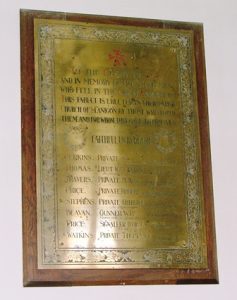
The Great War, 1914-1918
Wilfrid Price Beavan, Gunner, 220670, Royal Field Artillery. Wilfrid was born in 1898, the son of Price Goodwin Beavan and Mary Jane Beavan (nee Gittoes). His father was a farm labourer who was left a fortune when Wilfrid was young, so the family embarked upon a grand tour of the Americas, including a bequeathed estate in Mexico, before returning home and purchasing Plas Celyn, Llanigon. Wilfred gained a place at Cardiff University just prior to the war, but in the winter of 1916 left Cardiff to enlist into the Royal Field Artillery. He was drafted to France in September 1917 and was posted to D Battery, 124th Brigade, Royal Field Artillery, which was attached to the 37th Division and was in the Ypres Salient. The division was holding a sector of the line at Wytschaete when Wilfred arrived, and his new unit had set up its HQ at Lankhoff Farm. Much of October was spent bombarding German positions along the Menin Road, supporting the almost constant infantry attacks to try and capture Passchendaele Ridge. Wilfrid’s battery, under the command of Captain G. Farrant, was in action as usual on the morning of 12 October 1917 when a German shell crashed into their gun-pit, wounding Farrant and six men, and killing two outright. Wilfrid was among the wounded. He was evacuated back behind the line to a Field Ambulance where he died of his wounds that same day. The 19-year-old was buried in Voormezeele Enclosures No.1 And No.2, Belgium.
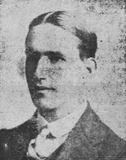
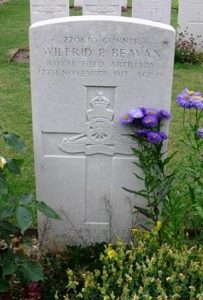
William Austin Hamer, Private, 46813, South Wales Borderers. William was the son of John and Sara Hamer, of Old Mill, Llanigon. He worked as a collier in Glynneath prior to enlisting at Neath into the army and was posted to France, joining the 1st Battalion, South Wales Borderers, which was attached to 3 Brigade, 1st Division. He was working at Llawllan Farm in May 1916, so possibly joined the battalion early in 1917 and would then have taken part in the Battle of Arras that spring. Later that year the division took part in the Passchendaele offensive, before moving to the Cambrai sector and taking part in another offensive there. The division was still in the area when the Germans launched their Spring Offensive on 21 March 1918 and took part in desperate fighting before being moved to Flanders to rest. However, on 9 April 1918 the Germans launched a fresh offensive along the Lys valley and the division became caught up in heavy fighting once more. William was taken prisoner by the Germans on 18 April 1918, during the Battle of the Lys. He was taken to a prison camp, where he remained incarcerated until after the Armistice when he was released. Too ill to return home, William was sent to the 42nd Stationary Hospital, Courban, where he died of pneumonia on 4 December 1918, aged 19. William is buried in Charmes Military Cemetery, France. William is commemorated at Glasbury, but not at Llanigon.
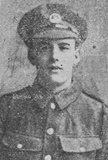
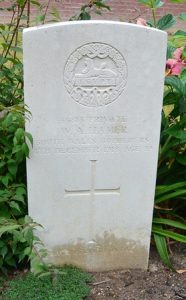
William Henry Sidney Perkins, Private, 27276, South Wales Borderers. William, known as Sidney, was born at Farnham, Surrey in 1876, the son of William Partridge Perkins and Mary Jane Perkins (nee Clark). He came to Wales with his work as a gamekeeper and by 1911 was lodging at Woodgate, Cascob. Sidney was residing at Llanigon when war broke out and enlisted at Brecon into the South Wales Borderers in the summer of 1915. He was drafted to France early in 1916, joining the 1st Battalion, South Wales Borderers, which was attached to 3 Brigade, 1st Division, but was then attached to the 177th Tunnelling Company, Royal Engineers for a while, which was hard at work digging tunnels and dugouts in the Ypres Salient. William was then posted to the 2nd Battalion, South Wales Borderers, which was attached to 87 Brigade, 29th Division and was rebuilding following severe losses during the opening day of the Somme offensive. The Division had been pulled out of the line to rest and rebuild in the Ypres Salient and William would have joined the battalion during this period at Ypres. On 4 October the division was relieved and began entraining for the Somme again from 7 October, before taking over positions near Gueudecourt. Sidney was killed in action here on 22 October 1916, during what was probably his first action. The 39-year-old is buried in A.I.F. Burial Ground, Flers, France.
Ivor Thomas Price, Private, 355153, Royal Welsh Fusiliers. Ivor was born in 1894, the son of Thomas Price and Elizabeth Annie Price (nee Price), of Llwynberried, Llanigon. He enlisted at Hay into the Montgomeryshire Yeomanry. On 5 August 1914 the Montgomeryshire Yeomanry was mobilised at Welshpool, as part of the South Wales Mounted Brigade, before moving via Hereford to Thetford, to join the 1st Mounted Division. On 4 March 1916 the 1st Mounted Division sailed for Egypt to join the EEF. On 4 March 1917 the battalion merged with the Welsh Horse Yeomanry to form the 25th (Montgomery & Welsh Horse Yeomanry) Battalion, Royal Welsh Fusiliers, as part of the newly formed 231 Brigade, 74th (Yeomanry) Division. The Division assembled in Egypt as part of the EEF, before crossing the Suez Canal into the Sinai, and saw its first major action during the Second Battle of Gaza. The battle was a failure, and the EEF was re-organised under a new commander, Sir Edmund Allenby, before launching the Third Battle of Gaza on the night of 31 October 1917. This assault was launched along a winder front, running from Gaza to Beersheba, and this time the EEF prevailed, opening the door to Jerusalem. On 30 November 1917 the 25th RWF attacked and captured a village called El Sireh, but the Turks made a strong counterattack in the afternoon and drove them back. Ivor was originally posted as missing, but when the village was recaptured twelve days later, his body was found. The 23-year-old is buried in Jerusalem War Cemetery, Israel.
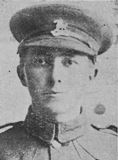
Robert Price, Private, 15081, King’s Shropshire Light Infantry. Robert was born in about 1886, the son of Edward Price and Arabella Price (nee Thomas), of 2, Barn Cottages, Llowes. He enlisted at Presteign into the King’s Shropshire Light Infantry soon after the outbreak of war. Upon completing his training, he was drafted out to France, disembarking on 7 July 1915, and was posted to the 1st Battalion, King’s Shropshire Light Infantry, which was attached to 16 Brigade, 6th Division. The division was rebuilding following heavy losses at Hooge the previous month and Robert joined the battalion at Poperinghe, where the men were enjoying a brief rest. On the following day, 9 July, the battalion moved back into the trenches at La Brique, to begin a routine tour in the line, before moving back to Poperinghe at the end of the month. The battalion then moved to Vlamertinghe on 31 July and on 6 August took over positions at Hooge, taking part in a successful attack three days later, which saw heavy casualties incurred. This ‘routine’ trench warfare continued over the coming weeks, in terrible conditions. On 17 December the 1st KSLI moved into the front line at La Brique, to begin another routine tour. Robert was wounded when the Germans launched a gas attack upon the battalion on 19 December and was evacuated to the hospital at Remy Sidings, where he died of his wounds the following day, 20 December 1915. The 29-year-old is buried in Lijssenthoek Military Cemetery, Belgium.
Walter Jones Sandys-Thomas, Second Lieutenant, South Wales Borderers. Walter was born in Lindooler, Ceylon in 1892, the son of Walter Sandys-Thomas and Alice Violet Sandys Thomas (nee Cross-Buchanan). The family had a residence at Llanthomas Mansion, Llanigon. Walter was educated at Marlborough College prior to taking over his father’s tea plantation in Ceylon. He then became a member of the Ceylon Planter’s Rifle Corps, a local Militia unit. In February 1916 Walter returned home to take up a commission as Second Lieutenant into the 3rd Battalion, South Wales Borderers and in August 1916 he was drafted to France, joining the 2nd Battalion, South Wales Borderers. The battalion was attached to 87 Brigade, 29th Division and had suffered severe losses during the opening phase of the Somme offensive on 1 July 1916. On 24 July the battered division was relieved and marched to Daours before entraining for the Ypres Salient to rebuild and took over positions on the Canal Bank. On 4 October the division was relieved and began entraining for the Somme again from 7 October, before taking over positions near Gueudecourt, where it saw heavy fighting over the coming days. On 3 November the battalion was relieved again and entrained at Albert for Airaines to rest and rebuild, then eleven days later the battalion returned to the Somme, where the division would remain over the winter, in the Lesboeufs sector. Walter was wounded here around this time and was evacuated to England for treatment. Upon his recovery he was posted back out to France on 22 January 1917, re-joining the battalion, which was still in the Lesboeufs sector. Walter was supervising a working party here on 4 February 1917 when he was shot and killed by a German sniper. The 24-year-old was buried in A.I.F. Burial Ground, Flers, France. His younger brother Lieutenant Charles Ivor Sandys-Thomas, of the RFC, had been reported killed on 20 July 1916, although he had in fact been taken prisoner and survived the war.
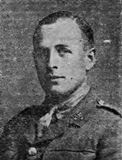
Arthur Edward Stephens, Private, 267536, Monmouthshire Regiment. Arthur was born in 1896, the son of Lewis Stephens and Caroline Elizabeth Stephens (nee Evans), of Glancellyn, Llanigon. He worked as a cowman at Lodge Farm, Three Cocks prior to the war. Arthur enlisted at Brecon into the 3/1st Brecknockshire Battalion, South Wales Borderers on 26 January 1915 and was posted to the 2/1st Brecknocks soon afterwards. The battalion left Brecon for Dale, in Pembrokeshire in April 1915 to join the Milford Haven garrison, then at the end of 1915 moved to Bedford to join the 68th (2nd Welsh) Division. On 30 July 1916 Arthur was drafted to France and was posted from the Infantry Base Depot to the 2nd Battalion, Monmouthshire Regiment, which was the Pioneer Battalion to the 29th Division. The Division had suffered terrible casualties at Beaumont Hamel, during its assault on Y-Ravine on 1 July 1916 and, although severely depleted, the Division remained in the line here over the coming weeks, in trying conditions. On 27 July the Division entrained for Flanders, detraining at Proven before relieving the 6th Division at Ypres. The Division held the line here over the coming weeks as it rebuilt its strength and the 2nd Monmouth’s worked hard on improving trenches and digging new communications trenches. The battalion then worked on the Menin Road, erecting elephant shelters, then on 4 October the Division was relieved and entrained south for the Somme once more, moving to Trônes Wood, before joining the latter stages of the Somme offensive at Gueudecourt. The Division wintered on the Somme, with the 2nd Monmouth’s working on road repairs around Montauban, Ginchy, Flers and Morval over the winter. In the Spring of 1917 the Division fought at the Battle of the Scarpe, which was part of the Arras Offensive, seeing heavy fighting around Monchy-le-Preux, and then moved further north to Ypres, initially to hold the line whilst other units had been withdrawn for specialist training, in readiness for the Third Battle of Ypres, which opened on 31 July 1917. The 29th Division went into reserve whilst the first attacks, the Battle of Pilckem Ridge, took place, then took part in a costly assault on Langemarck. The Division then had another period out of the line to rest and refit before taking part in further fighting near Poelcapelle. Arthur was badly wounded whilst working on light railways near Elverdinghe on 22 October 1917, suffering a gunshot wound to his back, which had penetrated his chest. He was evacuated to the nearby Casualty Clearing Station at Dozinghem, where he died of his wounds that same day. The 20-year-old was buried in Dozinghem Military Cemetery, Belgium.
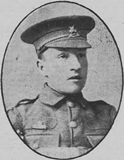
James Travers, Private, 53980, Royal Welsh Fusiliers. James was born in 1894, the son of James Travers and Mary Ann Travers (nee Jones), of Allt, Llanigon. Prior to the war he worked as a farm labourer at Erwood. James enlisted at Brecon into the Brecknockshire Battalion, South Wales Borderers early in 1915, and was posted to the 2/1st Brecknocks. The battalion left Brecon for Dale, in Pembrokeshire in April 1915 to join the Milford Haven garrison, then at the end of 1915 moved to Bedford to join the 68th (2nd Welsh) Division. In the summer of 1916 James was drafted to France and was posted from the Infantry Base Depot to the 1st Battalion, Royal Welsh Fusiliers, which was attached to 22 Brigade, 7th Division. The Division had taken part in the opening assault of the Somme offensive on 1 July 1916, advancing from positions near Bois Francais, near Fricourt, and capturing the village of Mametz, one of the few successes of 1 July 1916. The battalion then took part in further attacks to push forwards, to the south of Mametz Wood, and upon being relieved, witnessed the troops of the 38th (Welsh) Division moving forward to launch its assault on Mametz Wood. On 14 July, with the wood taken, the 7th Division moved back into the line, with orders to capture Bazentin-le-Petit, before taking part in the terrible attacks on High Wood over the coming days. On 22 July the 1st RWF was relieved, moving back into reserve to rest and rebuild at La Chaussee. By 12 August the battalion had moved forwards to Dernancourt, and on 26 August marched further forward, to take part in the Divisions assault on Ginchy. The Division saw heavy fighting over the coming days, before the 1st RWF had another short break, but on 1 September the battalion received orders to push forwards again to launch a fresh assault on Ginchy from Montauban Alley. On 3 September 1916 the 1st RWF launched its assault, but suffered severe casualties, with over 200 officers and men killed, wounded or missing. The division remained on the Somme over the winter, in abysmal conditions, then in March 1917 began following up the German withdrawal to the Hindenburg Line, reaching Croisilles by 30 March. James was wounded during the advance during the preceding days, and was evacuated to a hospital at Colincamps, where he died of his wounds on 31 March 1917. The 23-year-old is buried in Euston Road Cemetery, Colincamps, France.
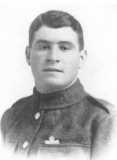
Thomas John Watkins, Private, 38583, Gloucestershire Regiment. Thomas was born in 1897, the son of John Watkins and Mary Anne Watkins (nee Probert), of the Old Vicarage, Llanigon. He enlisted at Brecon into the South Wales Borderers during the spring of 1916 and after completing his training was drafted to France, before being posted to the 8th Battalion, Gloucestershire Regiment. The battalion was attached to 57 Brigade, 19th (Western) Division and Thomas probably joined it during the summer of 1916, on the Somme. The Division wintered on the Somme and in February followed the German withdrawal to the Hindenburg Line. During the middle of March 1917, the Division was relieved from the line and began to move north, taking over positions in the Ypres Salient, and on 7 June took part in the assault on Messines Ridge, which was famously preceded by the blowing of a series of 19 huge underground mines. The 19th Division saw heavy fighting during the battle, then enjoyed a short spell in reserve before moving back into the line on 11 September, taking over a section of trenches running from the Ypres-Comines Canal to Belgian Wood and on 20 September launched a costly attack past Hollebeke Chateau, to Hessian Wood. The Division wintered in the Cambrai sector, following the closure of the Battle of Cambrai, and held a section of the line in the Flesquières Salient. Thomas was badly wounded by shrapnel whilst the 8th Gloucester’s were in the line near Havrincourt Wood on 19 January 1918 and died of his wounds that same day. The 20-year-old was most probably buried nearby, but on 21 March 1918 the battalion was hit by the German spring offensive, the preceding artillery barrage of which devastated the area. As a result, he has no known grave and is commemorated on the Thiepval Memorial, France.
World War Two, 1939-1945
George Evans, Private, 1832833, Royal Electrical and Mechanical Engineers. George was the son of William Oliver Evans and Eliza Evans. He married Agnes May Stephens, of Pengenhill Common House, Llanigon in 1924. George enlisted into the Royal Electrical and Mechanical Engineers following the outbreak of war and probably embarked for North Africa. Following the fall of the Afrika Korps in 1943, the Allies launched attacks on the Italian mainland that year. George was killed in Italy on 24 August 1945, aged 41. Little else is known of him, as no unit is shown by the CWGC, but he was buried in Bari War Cemetery, Italy.